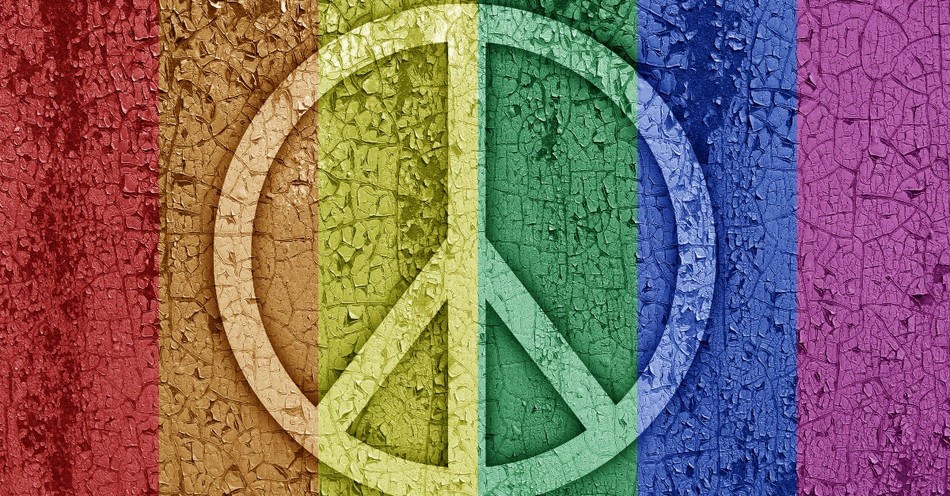Christ is a symbol of peace in the world, but is there one sign commonly associated with Him? Is the peace sign, which emerged in the 1960s a Christian symbol or should we turn to the symbol of the dove? This article will explore the symbology of peace as it relates to Jesus Christ and His followers.
The Dove, the Olive Branch, and the Spirit of Peace - Peace Signs in the Bible
The dove is often seen as a symbol of peace in both Christian and secular imagery. The most memorable uses of doves in Scripture are probably those in Genesis 8:11 and Matthew 3:16 when the Holy Spirit appears in avian form. Noah sends out a dove to find dry land, and the bird returns bearing an olive branch in its beak. After Jesus was baptized, “he saw the Spirit of God descending like a dove and alighting on him” (Matthew 3:16).
But is it the dove specifically that stands for peace? “The olive branch is usually a symbol of peace, harmony, and hope” according to Greek mythology. Some writers say that the dove reflects peace; others specify that either the olive branch alone or the dove holding the olive branch is the important image.
After all, the Bible features doves multiple times. They are used in sacrifice (Leviticus 14:30). They represent beauty (Song of Solomon 1:15), mourning (Isaiah 59:11), and meekness (Matthew 10:16). A connection to peace is, at times, indirect because the dove represents the Holy Spirit, which is a Spirit of peace (1 Corinthians 14:33), yet, clearly, the dove brings more than shalom in his beak.
Jared C. Wilson writes, “The dove with the leaf in her mouth is a very pretty image [...] of something new bursting forth,” and “a reminder of God’s holiness, of his power.” The image “is one of hope but also a reminder of curse. We see in the entirety of the story of Noah’s flood, in fact, that — as C.S. Lewis says of Aslan in the Narnia stories — he is not safe but he is good.”
As another writer puts it, “The dove can be a symbol of peace. Both wind and fire can be symbols of power. Each of these is representative of the Holy Spirit, but even together cannot fully express who He is or His power.” In other words, trying to oversimplify the Lord’s intentions leads to frustration.
History of the World’s Peace Sign
During the late 1950s, when the threat of nuclear war was rising, protesters in the U.K. marched for nuclear disarmament. “Gerald Holtom, a designer and a pacifist, had developed” a symbol which he hoped would “make the message stronger.” Holtom was correct about the value of an image: “The symbol [...] went on to become one of the most widely recognized designs in history,” seen worldwide as the symbol for peace.
The peace sign is recognizable as an inverted “V” with a line running vertically through the middle, held within a circle. Holtom took inspiration from semaphore in which the upside-down V stood for “nuclear” and the line meant “disarmament.” “It also kept adapting, like a chameleon, taking on many different meanings for peace and justice.” Holtom had no such intentions: “I drew myself: the representative of an individual in despair, with hands palm outstretched outwards and downwards in the manner of Goya's peasant before the firing squad.”
Holtom commented later that he had “wanted to use a cross in a circle, but clergy had discouraged him from doing so.” He wished he had “turned it around and faced it up to represent the joy brought by peace.” Even for the peace sign’s designer, its potential, meaning, and use continued to change. The symbol gained acceptance but the Christian heart behind it was lost.
Peace Signs Around the World
Holtom’s peace sign has been adopted and adapted by many organizations, most of them non-Christian. Its features, though simple, also point to a wide selection of non-Christian themes. Visitors to The Peace Museum in Bradford, England, will learn about “older and more nefarious claims about the origin of the peace sign” linked to “communism, Nazism, occult use, Hinduism, and anti-Christian symbolism.” For example, “Germanic tribes used the inverted V as a "rune" with eerie or mystical powers,” while for the Third Reich, it symbolized death and “appeared on death notices and some tombstones of SS soldiers.”
During the first century AD, “a broken cross” came to “symbolize a broken Jew. Nero crucified Peter upside-down, creating what was known as the Neronic cross.” There are yet more examples of the sign associated with pagan and satanic worship where the downward “V” is actually a fork. According to one writer, the circle means “totality” while the fork means “death of a man;” that is, “total death of all people.”
“The circle is a universal symbol with extensive meaning.” Depending on which culture or belief system uses it, the circle “represents [...] totality, wholeness, original perfection, the Self, the infinite, eternity, timelessness, all cyclic movement, God,” plus more. Besides its various masculine and feminine associations (sun, egg), “it has a magical value as a protective agent” but also the end of “individuation, of striving towards a psychic wholeness and self-realization.”
Eternity, oneness with God, wholeness, and original perfection are easily connected to Jesus and His gospel message, but the circle and those lines within it mean different things to various interpreters and have done for centuries. The dove and olive branch, likewise, are unreliable as symbols of peace because they reflect other themes both biblically and in secular or pagan cultures, past and present.
Christianity’s Peace Sign Symbols
Is there a single sign one can point to as the Christian peace symbol? Imagery devised by the faithful in the decades following Christ’s resurrection includes a fish, a pelican, and a shepherd. As Christianity spread, cultures altered their existing symbols, such as the Celtic Knot.
Celtic Knots were symbolic of eternity and of “love between two people” before the time of Christ. The knot is “perhaps one of the most befitting images for the Gospel story [...]. In a Celtic knot, every strand is completely interlaced with every other strand. There is no beginning or ending.”
In Ireland, “St. Patrick is reported to have used the shamrock as a way to explain the mystery of the Trinity to the Irish people,” which the “Druid people very easily picked up because three was considered a sacred number.”
More Peace Signs: Safety and Peace
These images symbolize Christ, but how do they stand for peace? “On the evening of that first day of the week, when the disciples were together, with the doors locked for fear of the Jewish leaders, Jesus came and stood among them and said, ‘Peace be with you!’” (John 20:19). Jesus set the example by offering peace as a sign that the disciples could recognize each other by. He had already told them that the sheep recognize the voice of their Shepherd (John 10:27-29). Christ’s voice embodied peace and to hear it was to experience wholeness and safety; to be protected from thieves who come to “steal and kill and destroy” (John 10:10). The apostles and many disciples of Christ today are under threat of persecution, torture, and death. To display a sign of Christ is to advertise a place of safety to those who recognize the code.
Peace is “a state of security or order within a community provided for by law or custom.” The word from its Proto-Indo-European root “pag” means “to fasten” and suggests “the notion of ‘a binding together’ by treaty or agreement.” This earlier meaning lends itself to the gospel message of unity in which Christians are to “encourage one another and build up one another” (1Thessalonians 5:11).
When Jesus gave His peace, He was not merely directing His disciples to cease bickering, have courage, and unite. “The biblical concept of peace [...] means ‘to be complete’ or ‘to be sound’” suggestive of action and also a state of being. Peace is a “harmony between two parties or people, often established by a covenant;” “prosperity, success, or fulfillment;” and “victory over one's enemies or absence of war.” Peace or “shalom” was “a blessing on the one to whom it was spoken.” Christ expected followers to experience shalom and to offer it. Peace was safety, within as without.
What Does This Peace Sign Mean?
Christians find victory, peace, and welcome in Christ and His Word. Secular, temporal peace lasts only as long as the armaments are laid down or diffused. It suggests oppressors win if one is punished, tortured, or killed for his or her belief. But even as the inverted cross reminds one of Peter’s crucifixion upside-down, the circle reminds believers of the gospel which held him safe for eternity. Christians don’t need a pictorial reminder, but they can embody shalom by the outworking of Christ’s Spirit within them.
Photo credit: ©iStock/Getty Images Plus/grynold










